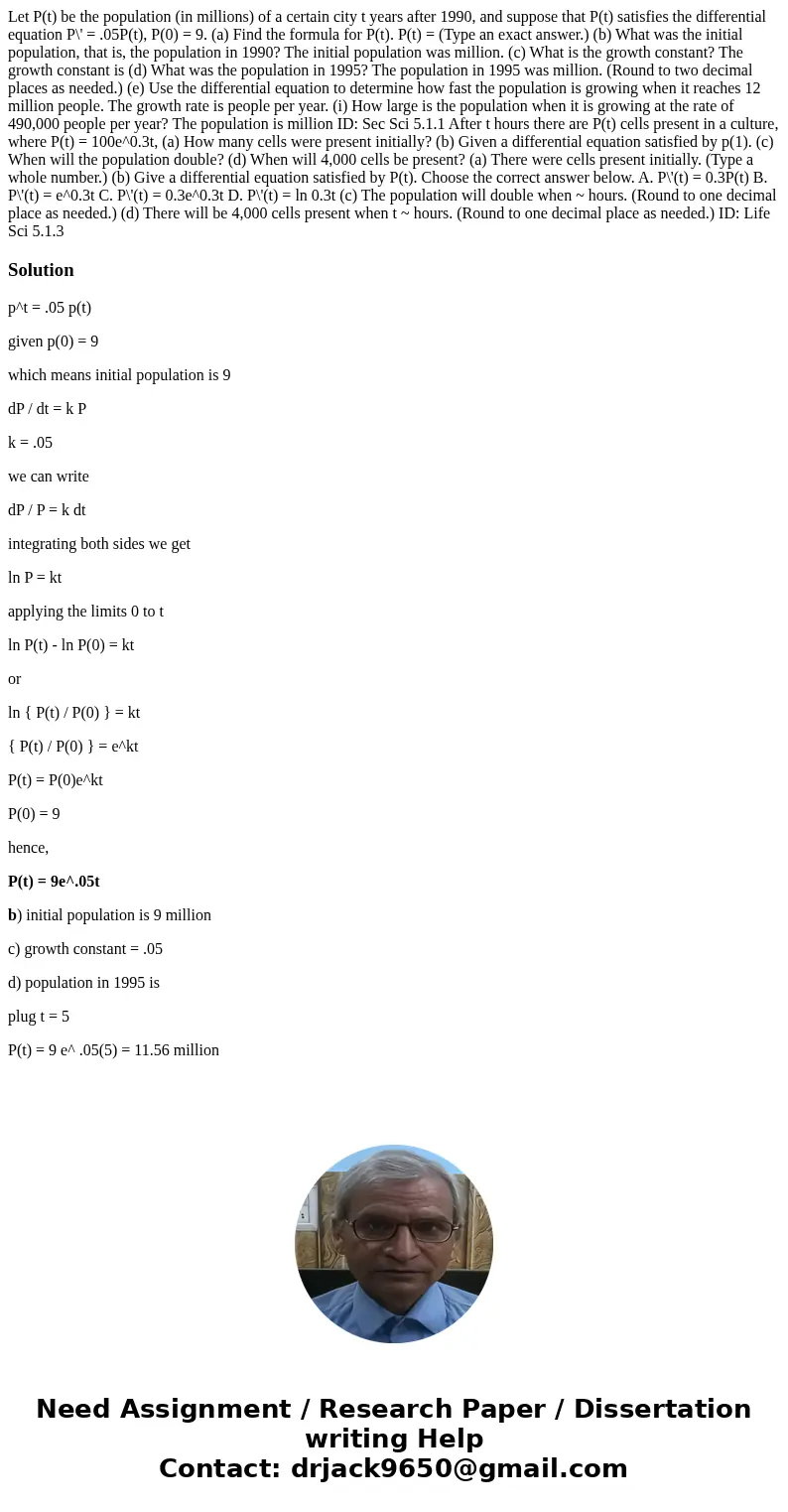Let Pt be the population in millions of a certain city t yea
Let P(t) be the population (in millions) of a certain city t years after 1990, and suppose that P(t) satisfies the differential equation P\' = .05P(t), P(0) = 9. (a) Find the formula for P(t). P(t) = (Type an exact answer.) (b) What was the initial population, that is, the population in 1990? The initial population was million. (c) What is the growth constant? The growth constant is (d) What was the population in 1995? The population in 1995 was million. (Round to two decimal places as needed.) (e) Use the differential equation to determine how fast the population is growing when it reaches 12 million people. The growth rate is people per year. (i) How large is the population when it is growing at the rate of 490,000 people per year? The population is million ID: Sec Sci 5.1.1 After t hours there are P(t) cells present in a culture, where P(t) = 100e^0.3t, (a) How many cells were present initially? (b) Given a differential equation satisfied by p(1). (c) When will the population double? (d) When will 4,000 cells be present? (a) There were cells present initially. (Type a whole number.) (b) Give a differential equation satisfied by P(t). Choose the correct answer below. A. P\'(t) = 0.3P(t) B. P\'(t) = e^0.3t C. P\'(t) = 0.3e^0.3t D. P\'(t) = ln 0.3t (c) The population will double when ~ hours. (Round to one decimal place as needed.) (d) There will be 4,000 cells present when t ~ hours. (Round to one decimal place as needed.) ID: Life Sci 5.1.3 
Solution
p^t = .05 p(t)
given p(0) = 9
which means initial population is 9
dP / dt = k P
k = .05
we can write
dP / P = k dt
integrating both sides we get
ln P = kt
applying the limits 0 to t
ln P(t) - ln P(0) = kt
or
ln { P(t) / P(0) } = kt
{ P(t) / P(0) } = e^kt
P(t) = P(0)e^kt
P(0) = 9
hence,
P(t) = 9e^.05t
b) initial population is 9 million
c) growth constant = .05
d) population in 1995 is
plug t = 5
P(t) = 9 e^ .05(5) = 11.56 million

 Homework Sourse
Homework Sourse